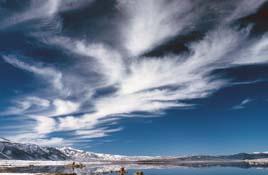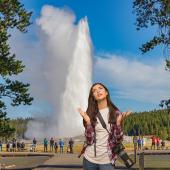Polarizing Candidates
If you have a camera that allows you to change the lens—a single-lens reflex (SLR) camera—specialty filters will improve the quality of your photographs. So before you head out to take photographs in high mountain country this spring, be sure you have a polarizing filter.
Polarizing filters are commonly used in landscape photography, and they make the blues of Montana’s big sky "pop." In fact, a polarizing filter increases a picture's color saturation, making all the colors brighter.
Keep in mind that polarizers generally do not give the desired results when the sun is directly overhead or when light is naturally polarized (sunrise and sunset). Because polarizing filters absorb about two stops of light, removing them in low light conditions conserves precious light resources during the golden hours of the day.
Graduated neutral-density filters allow you to reduce the exposure reaching a specific part of your picture. For example, if the sky is too bright and is going to be washed out, a graduated neutral-density filter allows you to reduce the brightness of the sky without affecting the color or the foreground. Rotate the filter 180 degrees and it will reduce the glittering brightness of snow in the bottom of your image, allowing you to retain details and textures that might otherwise be lost.
Want to explore the wonderful world of macro (close-up) photography? Avoid carrying additional weight by using a two-element close-up filter on a lens you already own. It’s a great way to add versatility to a telephoto lens and still get great close-up images. Using one of these filters on a telephoto lens blurs out visually distracting backgrounds and works from far away—useful for bugs and other creepy crawlers that you may not want to get too close to.
For creative softening effects, the pocket-size Lensbaby is a complete lens designed to give you full control of what is sharp and what is not in your picture, a big advantage over a soft-focus filter. By bending the Lensbaby, you can easily shift the focal point to any area of the picture you choose. There is a great close-up kit for the Lensbaby that allows you to shoot true macro. Try it with early spring flowers, water droplets, or ice crystals. There’s one to match all popular camera mounts.
Ultimately, experimentation is the best teacher. When something doesn’t work, go back to your camera store or camera club to find a solution that will get you past a particular problem. So, head outside and keep taking pictures.
Jenna Caplette is a writing coach and aspiring photographer who teaches "1,000 Words: Writing from Photographs" at F-11 Photographic Supplies in Bozeman. Read other tips at f11photo.com.











